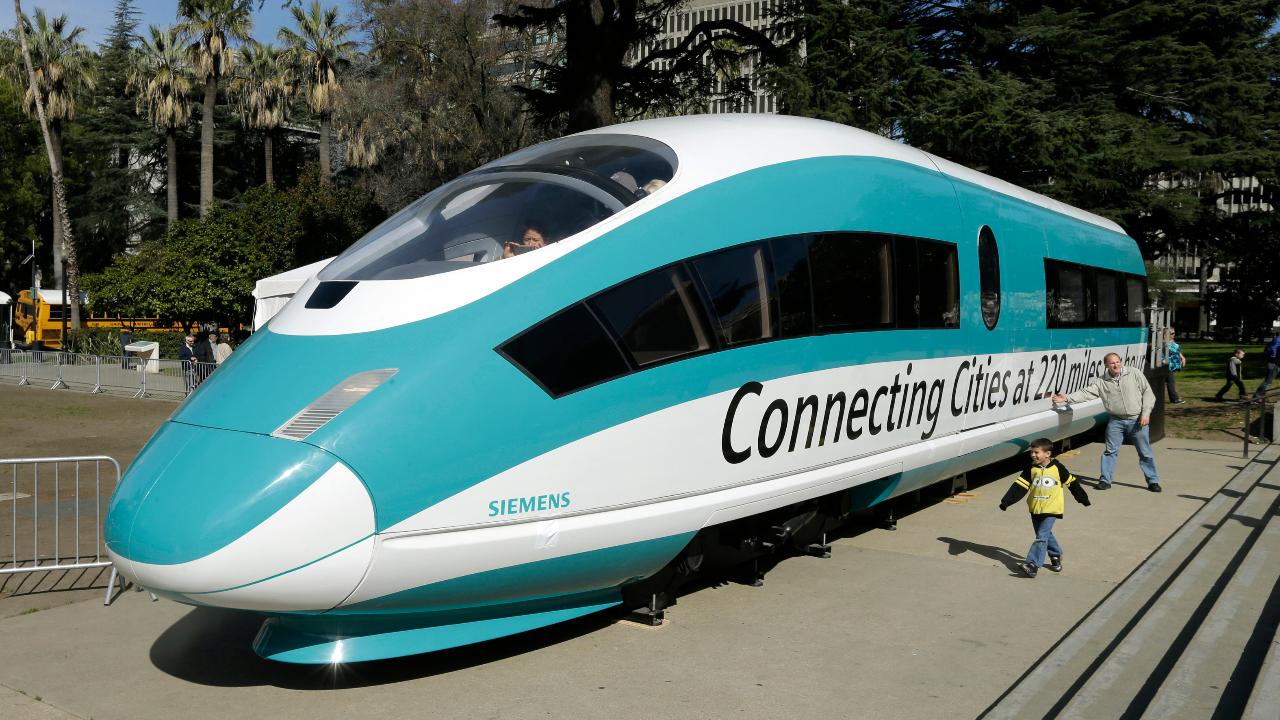California's failed bullet train: 100 billion reasons to return taxpayer money
California’s High Speed Rail Authority this week asked the Trump administration to reconsider on canceling and rescinding its $3.5 billion in federal grants allocated for the state’s failed high-speed rail project.
Despite California’s claims that being forced to return these funds “would be disastrous,” the Trump administration made the right call. Not one additional red cent of federal taxpayer money should go towards this liberal pipe dream.
Shortly after taking office, California Gov. Gavin Newsom pulled the plug on what was supposed to be his predecessor Jerry Brown’s “legacy project”: a high-speed rail that would transport riders from San Francisco to Los Angeles in just under three hours. In his announcement he said, “the current project, as planned, would cost too much and, respectfully, take too long.” But that was putting it kindly.
The high-speed rail project was facing ballooning costs with estimates rising from $32 billion when voters originally approved the project in 2008, to over $100 billion according to the most recent business plan. The “bullet train” was supposed to be up and running by 2022, but delays and bulging budgets kept pushing the original date back. Newsom finally had the sense to face reality and desert this green dream. Unfortunately, this happened after both U.S. taxpayers and California residents were out billions of dollars.
This is not the Golden State’s first failure implementing environmental policies. For decades California has resorted to centralized, command-and-control government policies to regulate residents’ energy choices under the guise of protecting the environment.
The state’s long history of failed green projects should serve as a warning to those attempting to toy with the economy using the central controls implicit in the Green New Deal. Just look at the economic problems facing California.
California's economic woes
In 2002, California established its renewable portfolio standard (RPS) and mandated the state secure 44 percent of its electricity from renewable sources by 2024 and 60 percent by 2030. As a result, the Energy Information Administration reports that California residents pay 19.9 cents per kilowatt hour of electricity. That is nearly double the rate of costs in states without RPS mandates. These energy costs make California the fifth most expensive state in the nation for residential electricity prices, and as these mandates kick in, the sky is the limit.
California’s affordable housing woes are just as bad. A 2016 report from McKinsey and Company estimated Californians pay $50 billion in annual housing costs more than they can afford. And green projects are only making this problem worse. California recently became the first state to mandate that every new home constructed in the state must also install solar panels. According to California’s Energy Commission this will add between $8,000 to $10,000 to the cost of a new home.
When it comes to gas prices, California ranks among the worst in the nation, according to the U.S. Energy Information Administration, only behind Hawaii (a special case due to its remote location). This is due to stringent regulations placed on refineries as well as higher transportation costs due to a lack of interstate pipelines.
California’s quest for “environmental leadership” has resulted in taxpayer funded boondoggles, escalating energy costs, crumbling infrastructure, and an increasingly widening wealth gap, forcing millions of residents to flee the state, according to the the U.S. Census Bureau’s American Community Survey data.
CLICK HERE TO GET THE FOX BUSINESS APP
There’s no question that California’s green pursuits and the price tag associated with them have put the state on a path to an impending trainwreck. In the case of their recent high-speed rail, they stopped just short of a literal one. It’s time for the state to take responsibility for its failures and return the federal funds it swindled away from taxpayers.
Thomas J. Pyle is president of the American Energy Alliance (AEA), a not-for-profit organization that advocates for free energy markets.




















